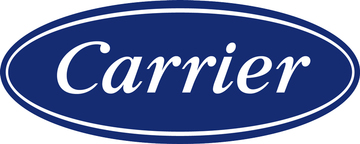The WPJ
THE WORLD PROPERTY JOURNALReal Estate Facts Not Fiction
Real Estate News

Improving IAQ in the New Normal
Sponsored News » Sponsored News Edition | By Author | November 11, 2020 12:08 PM ET
 Building owners and engineers recognize that the built environment is complex and evolving. Each building presents unique challenges that can vary from hour to hour and season to season. The outbreak of COVID-19 has added a new element to this complexity.
Building owners and engineers recognize that the built environment is complex and evolving. Each building presents unique challenges that can vary from hour to hour and season to season. The outbreak of COVID-19 has added a new element to this complexity.Health experts agree that the risk of indoor disease transmission differs based on occupant density, work- and traffic flows and the presence of "hot spots" such as food preparation areas. Social distancing, hand-washing, disinfectant practices and the use of personal protective equipment are also factors.
COVID-19 Transmission
Contact, droplet, airborne and surface transmission are all possible ways the disease spreads. Of these, the threat of infection from airborne transmission caused by droplet nuclei (or aerosols) that remain suspended in air over long distances and times has been the most difficult to assess. A letter signed in July 2020 by more than 200 scientists and engineers concluded that "there is every reason to expect" that SARS-CoV-2 transmission by airborne micro droplets is an important transmission pathway. The authors recommended additional focus on effective ventilation along with measures to enhance airborne infection control.
-thumb-400x265-30925.jpg)
Click Here to Learn More
A recent evaluation of virus containment in air-handling systems also recommends a number of measures that can improve an HVAC system's effectiveness in reducing transmission. While analysis is ongoing, these findings reinforce the role of buildings as an important piece of the first line of defense in reducing COVID-19 transmission. A renewed focus on indoor air quality (IAQ) is fundamental to this defense.
The Impact of IAQ
As building owners and engineers reopen their facilities, plans for occupant safety and wellness will vary as widely as the built environments to which they return. Some owners may seek specific actions designed to reduce the threat of disease transmission. Others may pursue a more holistic approach to improving IAQ, including energy efficiency, operational cost savings, code compliance, greenhouse gas reduction and occupant wellness -- along with the slowing of virus transmission.
In addition to its role in infection transmission, poor IAQ can lead to headaches, fatigue, lack of concentration, and irritation of the eyes, nose, throat and lungs. IAQ optimized for volatile organic compounds (VOCs), carbon dioxide and outdoor air ventilation, on the other hand, has been shown to significantly improve cognitive functioning of office workers across nine measurements -- including crisis response, information usage and strategy.
Options to Assess IAQ and Occupant Safety
Often, the first step in preparing a building for reopening is to bring the HVAC system back to its original, commissioned state. The American Society of Heating, Refrigerating and Air-Conditioning Engineers (ASHRAE) suggests that the owner undertake a "tactical commissioning" of their building system to ensure that it is operating per design conditions and current operational strategies. This is usually accomplished with the help of a licensed and certified commissioning provider, a test and balance company and/or a building automation systems company.
-thumb-400x266-30927.jpg)
Click Here to Learn More
In order to understand these opportunities, owners may be presented with several levels of review, each different in time, expense and comprehensiveness.
- Basic Assessment - Usually intended for single sites and smaller buildings, a basic assessment includes a limited site walk-through and a facility interview to help identify issues and solutions.
- Observational Assessment - This level of review includes visual inspections; photographs; annotated floor plans; spot checks of indoor air and water quality, temperature and humidity; hand-washing support; and the observation of worker and patron flows. The resulting observational assessment identifies health and safety risks alongside possible solutions and next steps.
- Detailed Assessment - This option expands on the observational assessment to provide a more thorough assessment of a facility, including interviews with occupants of the building; testing IAQ and water for contaminants; reviewing temperature and humidity trends; and assessing emergency preparedness, occupancy flow and physical distancing potential.
- Comprehensive Assessment - This study builds on the work done in the detailed assessment option but also includes the planning and execution of recommendations; the creation of an ongoing plan for health, safety and IAQ optimization; an energy analysis; and the identification of future goals related to WELL, LEED® (Leadership in Energy and Environmental Design) or other potential certifications. All costs and operational savings are shown so that building owners can estimate payback.
- Custom Assessment - A building owner may opt for a custom assessment to establish a plan based on their unique occupancy requirements and built environment. The HVAC industry has developed a menu of solutions -- from increased ventilation and differential room pressurization to air-filtration and UVGI control -- to address the findings of these reviews. The results can be substantially improved IAQ and reduced possibility of disease transmission.
There's no single solution for moving forward safely in a post-pandemic world. A layered approach accounting for various of scenarios and the unique aspects of each building must be implemented. Still, what we know about disease transmission and IAQ suggests that building owners and engineers seeking to prepare their facilities for reoccupancy may consider prioritizing indoor air quality - and the experts at Carrier are available to help.
Through an industry-leading suite of advanced solutions and services, Carrier's Healthy Buildings Program helps deliver healthy, safe, efficient and productive indoor environments at a time they're needed most. The program draws from technologies designed to help improve IAQ by increasing outside air, improving temperature and humidity levels, managing occupancy density, optimizing energy efficiency and enabling touchless interactions.
Learn more about the Carrier Healthy Buildings Program and connect with your local expert at carrier.com/commercial.
Sign Up Free | The WPJ Weekly Newsletter
Relevant real estate news.
Actionable market intelligence.
Right to your inbox every week.
Real Estate Listings Showcase
Related News Stories
This website uses cookies to improve user experience. By using our website you consent in accordance with our Cookie Policy. Read More







